Keynote Forum
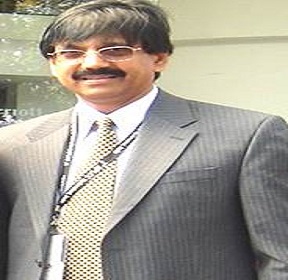
Ashok Srivastava
Trans Atlantic Therapeutics, LLC USATitle: Breast Cancer Treatment, nanoparticle encapsulated doxorubicin and Drug Safety
Abstract:
Breast cancer is the most common cancer in women worldwide. It is also the principal cause of death from cancer among women globally. Despite the high incidence rates, in Western countries, 89% of women diagnosed with breast cancer are still alive 5 years after their diagnosis, which is due to detection and treatment. Breast cancer incidence has been increasing. In 2015, an estimated 231,840 new cases of invasive breast cancer are expected to be diagnosed in women in the U.S., along with 60,290 new cases of non-invasive (in situ) breast cancer. About 2,350 new cases of invasive breast cancer are expected to be diagnosed in men in 2015. A man’s lifetime risk of breast cancer is about 1 in 1,000. Breast cancer incidence rates in the U.S. began decreasing in the year 2000, after increasing for the previous two decades. They dropped by 7% from 2002 to 2003 alone. One theory is that this decrease was partially due to the reduced use of hormone replacement therapy (HRT) by women after the results of a large study called the Women’s Health Initiative were published in 2002. These results suggested a connection between HRT and increased breast cancer risk. About 40,290 women in the U.S. are expected to die in 2015 from breast cancer, though death rates have been decreasing since 1989. Women under 50 have experienced larger decreases. These decreases are thought to be the result of treatment advances, earlier detection through screening, and increased awareness. White women are slightly more likely to develop breast cancer than African-American women. However, in women under 45, breast cancer is more common in African-American women than in white women. Overall, African-American women are more likely to die of breast cancer. The risk of developing and dying from breast cancer is lower in Asian, Hispanic, and Native-American women. About 5-10% of breast cancers can be linked to gene mutations (abnormal changes) inherited from one’s mother or father. Mutations of the BRCA1 and BRCA2 genes are the most common. On average, women with a BRCA1 mutation have a 55-65% lifetime risk of developing breast cancer. For women with a BRCA2 mutation, the risk is 45%. Breast cancer that is positive for the BRCA1 or BRCA2 mutations tends to develop more often in younger women. Increased ovarian cancer risk is also associated with these genetic mutations. In men, BRCA2 mutations are associated with a lifetime breast cancer risk of about 6.8%; BRCA1 mutations are a less frequent cause of breast cancer in men. All drugs for breast cancer treatment developed and on the market cause mild to several side effects, and the safety, pharmacovigilance, signal detection, and risk management of breast cancer drugs are difficult to report and manage. A series of challenges of breast cancer therapy and drug safety will be reported and discussed at the meeting along with liposomal nanoparticle encapsulated doxorubicin.
Biography:
Ashok Srivastava is the Chief Medical Officer of Trans Atlantic Therapeutics Oncology, He was the Chief Medical Officer of CareBeyond - A Radiation Therapy Cancer Center, New Jersey, USA. He has more than 15 years of experience in drug development, medical affairs, and commercialization of cancer drugs including radiopharmaceutical and supportive care; Phase I – 4, and marketing commercialization of Hematology, Oncology, and radiopharmaceutical drugs in the USA, EU, and Japan. He is the leader in Cancer Drug Development Worldwide large and complex Phase 3 Clinical Trials in many countries. He contributed to 21-INDs and 7-NDAs of Cancer Drugs, the acquisition /merger of a company and drug for more than $300 million. He received his clinical, and medical training & worked at renowned medical centers and pharmaceutical institutions worldwide; Walter Reed Army Institute of Research and Medical Center, Daiichi, Sumitomo, Pharmacia, Pfizer, Eisai Oncology, and Spectrum Pharmaceuticals. He received his Clinical, Medical & Business educations from All India Institute of Medical Sciences, New Delhi, India; the Academy of Medical Sciences, Czechoslovakia; the School of Medicine Nagasaki University, Japan, and Pharmaceutical Business at Rutgers University Business Management, New Jersey, USA. He played a key role in a dramatic expansion of oncology drug–developed cancer drugs- Sutent (Sunitinib), Evoxac (Cevimeline HCl), and liposomal doxorubicin (Myocet) in combination with Herceptin & Paclitaxel for HER2 positive metastatic breast cancer patients and latuda (Lurasidone) for schizophrenia He is one of the inventors of Japanese encephalitis vaccine (IXIARO). He has published more than 85 papers in National and International Journals, more than 120 abstracts, 3 book chapters, and 2 patents. He is the recipient of numerous National & International prestigious medical awards and recognitions from the United Nations, Ministry of Health, Japan, Department of Army, Walter Reed Army Medical Center, and Walter Reed Army Institute of Research, Washington DC, USA. He served as a medical advisor to Poniard Pharmaceutical for small-cell lung cancer in the USA, EU, and India. Srivastava is a member of numerous prestigious organizations; America’s Top Oncologist of the years 2007, 2008, and 2011, Breast Cancer Foundation, Indian Society of Oncology, American Society of Clinical Oncology, American Society for Therapeutic Radiology & Oncology, American Association of Cancer Research, and International Society of Lung Cancer. Dr. Srivastava is a strategic medical advisor and Board Member to several pharma in the USA for clinical, regulatory, and supervises cancer drug development. Recently Dr. Srivastava was awarded membership in Japan External Trade Organization, USA. Dr. Srivastava is a Leader in Drug Safety, pharmacovigilance of Oncology, hematology, and immuno-oncology and built global drug safety and pharmacovigilance companies in the USA, and India. Dr. Srivastava was invited as an honorable speaker at the drug safety & Pharmacovigilance congress in London, UK, China, India, and Washington, DC, USA in Jan 2012, 2013, and 2017. Dr. Srivastava brought 2 cancer drugs & a vaccine to a global market for approx 3 – 3.5 billion $ in global sales. He serves on the board of directors for oncology virtual pharma companies in the USA. He is on the Board of advisors to Calidi Biotherapeutics.

Lucia Ceresa
Microbial Solutions | Charles River ItalyTitle: Demonstrating method suitability for a rapid microbial detection method applicable to biologic products
Abstract:
Methods: New and emerging cell therapies and medicinal products present new challenges in the assurance of quality and safety in terms of end-product testing. While traditional pharmaceutical drug products have long-established standards for sterility assurance, these established processes are not optimized for cell therapies. For example, the Compendial sterility test requires not less than fourteen days of incubation for a reliable result, making it a rate limiter in the distribution of therapies to patients. Rapid Microbial Methods (RMMs) offer reliable alternatives to aging microbiological methods to solve the problem of reducing cycle time in cell therapy manufacture. ATP Bioluminescence is a matured technology that is used in the quality testing of various product samples in different industries. Detection of microbial ATP using the luciferin-luciferase reaction allows for the detection of microbes before they can be cultured to visual detection levels on microbial media. Until recently, ATP bioluminescence was not a viable contamination detection option for cell-based products, because these samples also contain cellular ATP. The established ATP Bioluminescence platform, Celsis was further developed to address this limitation. A sample cell lysing procedure allows for the extraction and, more important, the depletion of “non-microbial-ATP” while leaving microbial ATP intact. A case study on tests performed on different cell lines demonstrates the detection of a wide panel of typical and critical microbial species including spore former, yeast, molds, and “slow grower” as C. acnes.
Conclusion: Studies performed using the Celsis platform, and Celsis Adapt complimentary technology, demonstrated the successful depletion of cellular ATP from various types of samples, while also allowing fast detection of microbial presence contamination for a superior microbiological contamination control
Biography:
Lucia Ceresa has Extensive international professional experience, demonstrated capabilities, a proven track record, and expertise in promoting sales strategy and marketing programs. & Manages quality, regulatory, and compliance projects with multiple competing priorities having a direct impact on commercial opportunity. She Develops strategies for governmental approval to introduce new products to market, Broad capabilities and experience in all aspects of validation, quality control, and addressing the challenges of the pharmaceutical manufacturing process. She has Extensive industry experience with regulatory bodies and agencies regarding documentation for the submission and approval process. Lucia's Expertise from the initial R&D project phase through the final product release for commercialization.

Hiroshi Asahara
Tokyo Medical and Dental University JapanTitle: Tendon regeneration and functional enhancement for physical performance via Piezo1-Mkx axis
Abstract:
Tendons and ligaments are tough tissues that precisely connect muscle to bone and bone to bone, respectively. Once damaged; however, they are difficult to heal, and secondary osteoarthritis is known to occur in approximately 60% of cases. However, the development of treatment methods in current medicine has been challenging. One of the reasons for this is that the master transcription factors, the Operation System of our genome, that produce tendons have long been unknown. We created an expression catalog of all 1600 transcription factors and identified Mkx as the central transcription factor for tendons. First, we showed that Mkx could promote the differentiation into tenocytes (tendon cells) from human iPS cells. Using these tenocytes, we could produce tendon-like tissues and show the therapeutic effect of its transplantation in the tendon injury model. Next, we analyzed the potential function of Piezo1, mechano-sensor, and an Mkx upstream activator in tenocytes, by generating the mice in which an active type of Piezo1 was introduced into tenocytes. Surprisingly, in the tendon-specific gain of function Piezo1 mice, jumping ability and Max speed were significantly enhanced. Based on the results in mice, the role of Piezo1 in human athletic performance was tested. In collaboration with the Athrome Consortium, an international athlete genomics organization, we investigated the frequency of active PIEZO1 E756del in Olympic-level sprinters and the general population in Jamaica. Although the analysis is limited to a small number, the results showed that Jamaican sprinters had a significantly increased ratio of functional polymorphism compared to the general population. These discoveries in tendons have allowed us to understand the entire motor function system, contributing healthy society and medical care.
Biography:
Hiroshi Asahara was trained as an Orthopedic Surgeon after graduating from Okayama University Medical School. His career as a researcher led him to be a postdoctoral fellow at Harvard Medical School and a staff scientist at Salk Institute, under Prof. Marc Montminy. Asahara now organizes his own lab as a Professor of Molecular Medicine at The Scripps Research Institute, USA, and as Professor at Tokyo Medical and Dental University, Japan. Based on his unique Systems Biomedicine approaches combining a novel strategy and database, he and his lab are trying to uncover molecular mechanisms of musculoskeletal development and identify the critical pathway to regulate inflammatory diseases, including rheumatoid arthritis.
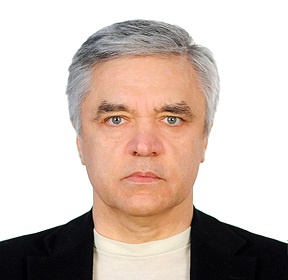
Sergey Suchkov
Institute for Biotech & Global Medicine of RosBioTech, Moscow, Russia RussiaTitle: Personalized and Precision Medicine (PPM) as a Unique Healthcare Model to Be Set Up via Biodesign, Bio- and Chemical Engineering, Translational Applications, and Upgraded Business Modeling to Secure the Human Healthcare, Wellness and Biosafety
Abstract:
Traditionally a disease has been defined by its clinical presentation and observable characteristics, not by the underlying molecular mechanisms, pathways, and systems of biology-related processes specific to a particular patient (ignoring persons at risk). A new systems approach to subclinical and/or diseased states and wellness resulted in a new trend in healthcare services, namely, personalized and precision medicine (PPM).
To achieve the implementation of the PPM concept, it is necessary to create a fundamentally new strategy based upon the biomarkers and targets to have a unique impact on the implementation of the PPM model into the daily clinical practice and pharma. In this sense, despite breakthroughs in research that have led to an increased understanding of PPM-based human disease, the translation of discoveries into therapies for patients has not kept pace with medical needs. It would be extremely useful to integrate data harvesting from different databanks for applications such as prediction and personalization of the further treatment to thus provide more tailored measures for the patients and persons at risk resulting in improved outcomes and more cost-effective use of the latest health care resources including diagnostic (companion ones), preventive and therapeutic (targeted molecular and cellular), etc.
Translational researchers, bio-designers, and manufacturers are beginning to realize the promise of PPM, translating to direct benefit to patients or persons at risk. For instance, companion diagnostics tools and targeted therapies and biomarkers represent important stakes for the pharma, in terms of market access, return on investment, and image among the prescribers. At the same time, they probably represent only the generation of products resulting in translational research and applications. So, developing medicines and predictive diagnostic tools require changes to traditional clinical trial designs, as well as the use of innovative (adaptive) testing procedures that result in new types of data. Making the best use of those innovations and being ready to demonstrate results for regulatory bodies requires specialized knowledge that many clinical development teams don’t have. The areas where companies are most likely to encounter challenges are data analysis and workforce expertise, biomarker and diagnostic test development, and cultural awareness. Navigating those complexities and ever-evolving technologies will pass regulatory muster and provide sufficient data for a successful launch of PPM, which is a huge task. So, partnering and forming strategic alliances between researchers, bio-designers, clinicians, businesses, regulatory bodies, and government can help ensure an optimal development program that leverages the Academia and industry experience and FDA’s new and evolving toolkit to speed our way to getting new tools into the innovative markets.
Healthcare is transforming, and it is imperative to leverage new technologies to support the advent of PPM. This is the reason for developing global scientific, clinical, social, and educational projects in the area of PPM and TraMed to elicit the content of the new trend. The latter would provide a unique platform for dialogue and collaboration among thought leaders and stakeholders in government, academia, industry, foundations, and disease and patient advocacy with an interest in improving the system of healthcare delivery on one hand and drug discovery, development, and translation, on the other one, whilst educating the policy community about issues where biomedical science and policy intersect
Biography:
Sergey Suchkov was born in the City of Astrakhan, Russia, in a family of dynasty medical doctors. In 1980, graduated from Astrakhan State Medical University and was awarded MD. In 1985, Suchkov maintained his Ph.D. as a Ph.D. student of the I.M. Sechenov Moscow Medical Academy and Institute of Medical Enzymology. In 2001, Suchkov maintained his Doctor Degree at the National Institute of Immunology, Russia. From 1989 through 1995, Suchkov was being the Head of the Lab of Clinical Immunology, at Helmholtz Eye Research Institute in Moscow. From 1995 through 2004 - a Chair of the Dept for Clinical Immunology, Moscow Clinical Research Institute (MONIKI). From 1993-1996, Suchkov was a Secretary-in-Chief of the Editorial Board, of Biomedical Science, an international journal published jointly by the USSR Academy of Sciences and the Royal Society of Chemistry, UK.
At present, Sergey Suchkov is:
- Professor and Chair, Dept for Personalized Medicine, Precision Nutriciology and Biodesign, the Institute for Biotech & Global Medicine of RosBioTech, Moscow, Russia
- Professor, Dept for Clinical Immunology, A.I. Evdokimov Moscow State University of Medical and Dentistry, Moscow, Russia
- Member, New York Academy of Sciences, USA
- Secretary General, United Cultural Convention (UCC), Cambridge, UK
Suchkov is a member of the:
- American Chemical Society (ACS), USA;
- American Heart Association (AHA), USA;
- European Association for Medical Education (AMEE), Dundee, UK;
- EPMA (European Association for Predictive, Preventive and Personalized Medicine), Brussels, EU;
- ARVO (American Association for Research in Vision and Ophthalmology);
- ISER (International Society for Eye Research);
- Personalized Medicine Coalition (PMC), Washington, DC, USA
- All-Union (from 1992 - Russian) Biochemical Society;
- All-Union (from 1992 - Russian) Immunological Society.
Suchkov is a member of the Editorial Boards of “Open Journal of Immunology”, EPMA J., American J. of Cardiovascular Research, and “Personalized Medicine Universe”

Sergey Suchkov
Institute for Biotech & Global Medicine of RosBioTech, Moscow, Russia RussiaTitle: Stem cell technologies to Integrate Biodesign-related Tissue Engineering within The Frame of Cell-Based Regenerative Medicine: Towards the Preventive, Therapeutic and Rehabilitative Resources and Benefits
Abstract:
Traditionally a disease has been defined by its clinical presentation and observable characteristics, not by the underlying molecular mechanisms, pathways, and systems of biology-related processes specific to a particular patient (ignoring persons at risk). A new systems approach to subclinical and/or diseased states and wellness resulted in a new trend in healthcare services, namely, personalized and precision medicine (PPM).
To achieve the implementation of the PPM concept, it is necessary to create a fundamentally new strategy based upon the biomarkers and targets to have a unique impact on the implementation of the PPM model into the daily clinical practice and pharma. In this sense, despite breakthroughs in research that have led to an increased understanding of PPM-based human disease, the translation of discoveries into therapies for patients has not kept pace with medical needs. It would be extremely useful to integrate data harvesting from different databanks for applications such as prediction and personalization of the further treatment to thus provide more tailored measures for the patients and persons at risk resulting in improved outcomes and more cost-effective use of the latest health care resources including diagnostic (companion ones), preventive and therapeutic (targeted molecular and cellular), etc.
Translational researchers, bio-designers, and manufacturers are beginning to realize the promise of PPM, translating to direct benefit to patients or persons at risk. For instance, companion diagnostics tools and targeted therapies and biomarkers represent important stakes for the pharma, in terms of market access, return on investment, and image among the prescribers. At the same time, they probably represent only the generation of products resulting in translational research and applications. So, developing medicines and predictive diagnostic tools require changes to traditional clinical trial designs, as well as the use of innovative (adaptive) testing procedures that result in new types of data. Making the best use of those innovations and being ready to demonstrate results for regulatory bodies requires specialized knowledge that many clinical development teams don’t have. The areas where companies are most likely to encounter challenges are data analysis and workforce expertise, biomarker and diagnostic test development, and cultural awareness. Navigating those complexities and ever-evolving technologies will pass regulatory muster and provide sufficient data for a successful launch of PPM, which is a huge task. So, partnering and forming strategic alliances between researchers, bio-designers, clinicians, businesses, regulatory bodies, and government can help ensure an optimal development program that leverages the Academia and industry experience and FDA’s new and evolving toolkit to speed our way to getting new tools into the innovative markets.
Healthcare is transforming, and it is imperative to leverage new technologies to support the advent of PPM. This is the reason for developing global scientific, clinical, social, and educational projects in the area of PPM and TraMed to elicit the content of the new trend. The latter would provide a unique platform for dialogue and collaboration among thought leaders and stakeholders in government, academia, industry, foundations, and disease and patient advocacy with an interest in improving the system of healthcare delivery on one hand and drug discovery, development, and translation, on the other one, whilst educating the policy community about issues where biomedical science and policy intersect
Biography:
Sergey Suchkov was born in the City of Astrakhan, Russia, in a family of dynasty medical doctors. In 1980, graduated from Astrakhan State Medical University and was awarded MD. In 1985, Suchkov maintained his Ph.D. as a Ph.D. student of the I.M. Sechenov Moscow Medical Academy and Institute of Medical Enzymology. In 2001, Suchkov maintained his Doctor Degree at the National Institute of Immunology, Russia. From 1989 through 1995, Suchkov was being the Head of the Lab of Clinical Immunology, at Helmholtz Eye Research Institute in Moscow. From 1995 through 2004 - a Chair of the Dept for Clinical Immunology, Moscow Clinical Research Institute (MONIKI). From 1993-1996, Suchkov was a Secretary-in-Chief of the Editorial Board, of Biomedical Science, an international journal published jointly by the USSR Academy of Sciences and the Royal Society of Chemistry, UK.
At present, Sergey Suchkov is:
- Professor and Chair, Dept for Personalized Medicine, Precision Nutriciology and Biodesign, the Institute for Biotech & Global Medicine of RosBioTech, Moscow, Russia
- Professor, Dept for Clinical Immunology, A.I. Evdokimov Moscow State University of Medical and Dentistry, Moscow, Russia
- Member, New York Academy of Sciences, USA
- Secretary General, United Cultural Convention (UCC), Cambridge, UK
Suchkov is a member of the:
- American Chemical Society (ACS), USA;
- American Heart Association (AHA), USA;
- European Association for Medical Education (AMEE), Dundee, UK;
- EPMA (European Association for Predictive, Preventive and Personalized Medicine), Brussels, EU;
- ARVO (American Association for Research in Vision and Ophthalmology);
- ISER (International Society for Eye Research);
- Personalized Medicine Coalition (PMC), Washington, DC, USA
- All-Union (from 1992 - Russian) Biochemical Society;
- All-Union (from 1992 - Russian) Immunological Society.
Suchkov is a member of the Editorial Boards of “Open Journal of Immunology”, EPMA J., American J. of Cardiovascular Research, and “Personalized Medicine Universe”
Speakers

Pallavi Dhillon
Trans Atlantic Therapeutics, LLC USATitle: Breast Cancer Treatment, nanoparticle encapsulated doxorubicin and Drug Safety
Abstract:
Breast cancer is the most common cancer in women worldwide. It is also the principal cause of death from cancer among women globally. Despite the high incidence rates, in Western countries, 89% of women diagnosed with breast cancer are still alive 5 years after their diagnosis, which is due to detection and treatment. Breast cancer incidence has been increasing. In 2015, an estimated 231,840 new cases of invasive breast cancer are expected to be diagnosed in women in the U.S., along with 60,290 new cases of non-invasive (in situ) breast cancer. About 2,350 new cases of invasive breast cancer are expected to be diagnosed in men in 2015. A man’s lifetime risk of breast cancer is about 1 in 1,000. Breast cancer incidence rates in the U.S. began decreasing in the year 2000, after increasing for the previous two decades. They dropped by 7% from 2002 to 2003 alone. One theory is that this decrease was partially due to the reduced use of hormone replacement therapy (HRT) by women after the results of a large study called the Women’s Health Initiative were published in 2002. These results suggested a connection between HRT and increased breast cancer risk. About 40,290 women in the U.S. are expected to die in 2015 from breast cancer, though death rates have been decreasing since 1989. Women under 50 have experienced larger decreases. These decreases are thought to be the result of treatment advances, earlier detection through screening, and increased awareness. White women are slightly more likely to develop breast cancer than African-American women. However, in women under 45, breast cancer is more common in African-American women than in white women. Overall, African-American women are more likely to die of breast cancer. The risk of developing and dying from breast cancer is lower in Asian, Hispanic, and Native-American women. About 5-10% of breast cancers can be linked to gene mutations (abnormal changes) inherited from one’s mother or father. Mutations of the BRCA1 and BRCA2 genes are the most common. On average, women with a BRCA1 mutation have a 55-65% lifetime risk of developing breast cancer. For women with a BRCA2 mutation, the risk is 45%. Breast cancer that is positive for the BRCA1 or BRCA2 mutations tends to develop more often in younger women. Increased ovarian cancer risk is also associated with these genetic mutations. In men, BRCA2 mutations are associated with a lifetime breast cancer risk of about 6.8%; BRCA1 mutations are a less frequent cause of breast cancer in men. All drugs for breast cancer treatment developed and on the market cause mild to several side effects, and the safety, pharmacovigilance, signal detection, and risk management of breast cancer drugs are difficult to report and manage. A series of challenges of breast cancer therapy and drug safety will be reported and discussed at the meeting along with liposomal nanoparticle encapsulated doxorubicin.
Biography:
Pallavi Dhillon, PharmD, Ph.D., is working at ClinFomatrix, NJ, USA, and New Delhi, India, and Trans Atlantic Therapeutics, New Jersey, USA, Director and Head of Clinical Operations and Drug Safety, USA, for more than 5 years and managing drug safety program globally, Quality Review of ICSRs, write and review safety narratives, pharmacovigilance Control document, monitoring of the compliance of outsourced pharmacovigilance activities. Lead concepts of quality management and inspection readiness within the study Clinical project monitoring and management to ensure that clinical trial project and process work was conducted to internal and external standards. This included ensuring that all colleagues, both internal as well as preferred CROs and partners, were regulatory inspection ready and staff were compliant with ICH GCP and relevant national and international regulations and guidelines and corporate policies and SOPs. Conducting clinical site feasibility studies as well as clinical site identification starting from Phase-I to Phase IV. Monitoring the clinical sites as per the monitoring plan to ensure that Principal Investigator(s) are conducting the study as per Protocol, ICH-GCP & SOPs. Pallavi Dhillon have experience in neuroscience drug development and safety: schizophrenia, depression, mania, bipolar disorder, pediatric bipolar, pediatric schizophrenia, neuropathic pain, inflammation; osteoarthritis in CNS patients. Pallavi Dhillon also have significant experience in Oncology: Phase 1-3 clinical trials, Solid tumor studies; lung cancers, head and neck, breast, liver, colorectal, prostate, and ovarian; hematologic tumors, leukemia, and myeloma blood disorders. Pallavi Dhillon also led the Cardiovascular: Lipid studies, Women's health: Osteoporosis; migraine, non-interventional studies, Infectious disease: HIV/AIDs; vaccine; upper respiratory tract infections, pediatric sinusitis, Specialty Care/Other Therapy Areas: Inflammation, rheumatology, urology. Pallavi Dhillon completed my doctor of philosophy, master and Bachelor's in pharmacy, at MDU Rohtak, India. Pallavi Dhillon worked at leading pharmaceutical companies; Baxter Healthcare India, Pharmacovigilance Specialist, India, and Pfizer Pharmacovigilance Officer, New Delhi, India, and was responsible for all AEs, SAEs, medication errors, and product complaints. Differentiating between Initial and Follow-up reports using ARGUS Working on database Pfoenix and ARGUS for comparison of Adverse Events and completing follow-up reports. QC of cases, AEM report forms for any kind of errors. Undergo client mentorship as designated by the project manager. I also worked as Clinical Research Associate, at Sir Ganga Ram Hospital, New Delhi, and managed phase 3 protocols, recruitment, patient screening, patient consent forms and follow-up management with Investigator. Maintained source documentation and drug accountability, SAEs reporting, maintained site master file. HIPPA inclusions for IRB/IEC submission. Pallavi Dhillon was a Trainee Clinical Research Associate, at Clinsys CRO, Noida, India and Assisted in the conduction of BA/BE studies. To prepare readiness of the clinical facility and all study/system-related documents for the audit process (QA audit, any regulatory Sponsor audit, etc) at all / times. Pallavi Dhillon completed an internship at Clinsys Clinical Research Organization as, Clinical Research Coordinator, Retention/recruitment Patients in India. Pallavi Dhillon am a member of the Pharmacy Associations of India and a registered pharmacist in India.

Teterina Anastasia
Russian Academy of Sciences RussiaTitle: Tissue equivalents based on sodium alginate for the treatment of trophic and diabetic skin lesions
Abstract:
The treatment of extensive skin defects requires the use of skin or its artificial analogs, and in recent years there have been numerous studies and developments on their application. But a universal carrier of cellular structures has not been created that would have biocompatibility, absorption capacity for wound exudate, prevent infection, create an optimal microenvironment for wound regeneration, be permeable to water and air, but not dry out the bottom of the wound, be elastic, model a surface with a complex relief. Under modern scientific developments in this area, it is obvious that a promising direction is the use of natural polymers capable of controlling the synthesis and orientation of fibrous structures. The study was aimed at solving a fundamental scientific problem related to the creation of biodegradable tissue equivalents based on biopolymers with an antibacterial effect for the manufacture of new personalized biomedical products. In the course of implementation, a technology was developed for obtaining new materials based on sodium alginate with controlled composition, microstructure, and properties to replace skin defects. Results have been obtained in the field of creating tissue equivalents for replacing the skin for the treatment of diabetic and trophic lesions, which combine high biocompatibility and have proangiogenic properties, that is, the ability to provide active vascular germination of the recipient tissue and the formation of a de novo vascular bed. The novelty of the approach lies in the development of methods for efficient saturation and subsequently prolonged release of drugs from the polymer matrix. The technology for obtaining a wide range of composite two-layer matrices, having one side porous surface, with the possibility of providing vascularization and the formation of a dermal layer by fibroblasts and MSCs, and a film coating on the second side to provide a suitable surface for keratinocytes, capable of forming a multi-layered epidermis. The approach of long-term prolonged release of drugs to provide antibacterial protection of wound or burn lesions of the skin was implemented. The features of the interaction of components in these systems were revealed, and the processes of formation of framework structures during their functionalization with antibacterial agents were established. The mechanical, chemical, structural, and biological characteristics were studied depending on the nature and concentration of the antibacterial drug. Computed tomography and scanning electron microscopy of the two-layer tissue equivalent and the porous layer are shown in the image.
Biography:
Teterina Anastasia, Ph.D. of technical sciences, 2017. The main scientific results are in the field of creating biocompatible materials for use in various fields of medicine (replacement and plasty of bone defects; means of localized and prolonged delivery of drugs into the body; regenerative medicine; coatings on metal implants). In addition to scientific work and research, he manages grants and projects, teaches, and reads courses of lectures, and tutors students and graduate students in the performance of scientific and practical activities.
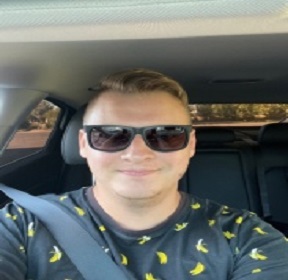
Igor V Smirnov
Russian Academy of Sciences RussiaTitle: Octacalcium phosphate and its cation-doped forms
Abstract:
The formation of new-generation materials in regenerative medicine is an urgent task since it directly affects the quality of people`s life. New approaches in synthetic bone substitute creation make it possible to treat a wider range of diseases or increase the speed and quality of recovery. Low-temperature calcium phosphates, especially octacalcium phosphate (OCP), are known as a precursor to biological hydroxyapatite in the formation of organic bone tissue. OCP has higher biocompatibility and osseointegration rates compared to other calcium phosphates. The possibility of creating low-temperature calcium phosphate compounds and obtaining substituted forms at physiological temperatures was shown in this work. Functionalizing of OCP materials by doping with cations, such as Sr2+ et.al.[1.2], combined with the technology of layer-by-layer ceramic personalized implant construction [3], is to combine all the developments of recent years into a single product. In this work, we propose a multi-stage approach to bulk materials creation based on DCPD, OCP, and OCP-dopped, the investigation of physicochemical properties and biological behavior, especially the effect of the substitution cation [4,5].
In this study [1], strontium ions were doped into the OCP structure by chemical recrystallization of DCPD in solution under physiological conditions. The molar ratio of strontium in the samples is close to the theoretical in all samples, except for OCP - Sr_ 50. The substitution of strontium, in this case, was experimentally up to 25-27 at. %, which is higher than in existing studies. Strontium substitution leads to the expansion of the crystal lattice of OCP at 5-10 at. % possibly stabilizes the crystal lattice, which requires a more detailed study of the processes occurring in this range. The results of in vitro biocompatibility studies show that the substitution of strontium in samples with OCP−Sr_20 and higher significantly increases cell viability, compared to undoped OCP. This effect may be associated with the absence of the OCP-Sr impact on the lysosomes biogenesis, as well as with the lack or even an inhibitory effect on ROS production.
Biography:
Igor Smirnov has experience in the field of obtaining biocompatible materials for bone tissue engineering, and chemical synthesis of bioactive coatings and materials, including low-temperature methods. He has considerable experience in investigations and processing of visualization data obtained using electron microscopy, X-ray diffraction, IR-spectroscopy, and computed tomography methods
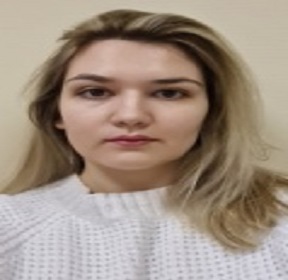
Polina V Smirnova
Russian Academy of Sciences RussiaTitle: Highly porous demineralized collagen matrices combined with low-temperature calcium phosphates
Abstract:
The development of osteoplastic materials with a high potential for osseointegration capable of providing a complete and effective regeneration of bone tissue remains an urgent and unresolved issue in modern tissue engineering. To create optimal conditions for bone tissue regeneration, there is a great need for porous, biocompatible, and stimulating localized osteogenesis materials that can provide effective recovery of bone tissue structure and volume with complete regeneration of bone integrity as an organ, preferably within a short time frame. Currently, in traumatology, orthopedics, and dentistry, using the technology of reconstructive bone tissue surgery, the most popular materials are bone grafts and bioartificial synthetic calcium phosphate materials. The presented work proposes an approach to create composite bioinspired osteoplastic materials for reconstructive bone tissue surgery by deposition (remineralization) on the surface of high-purity bone-collagen demineralized calcium phosphate matrices under conditions simulating the natural process of bone tissue biomineralization. The combination of demineralized bone matrix (DBM) as a scaffold and low-temperature hydroxyapatite (Hap) precursors as a coating can lead to the most effective osteoplastic material. Demineralized bone matrix (DBM) was obtained according to the author’s method (patent RU 2686309 C1, 04.25.2019). Deposition of the calcium phosphate coatings on the matrix was carried out by precipitation of dicalcium phosphate (DCPD) in acetate-based solutions followed by transformation to octacalcium phosphate (OCP).
The methods of the histological and elemental analysis show the reproduction of bone tissue matrix microarchitectonics and a high purity degree of the obtained collagen matrices; the methods of cell culture and confocal microscopy show high biocompatibility of the materials obtained. In the model of heterotopic implantation in rats for a period of 7 and 11 weeks, intensive intratrabecular infiltration of precipitated calcium phosphates into the structure of bone-collagen matrices by the type of full physiological biomineralization was demonstrated, as well as a pronounced synthetic activity of osteoblasts that remodel and rearrange implanted materials without any signs of utilization resorption. Computed tomography and scanning electron microscopy of the DBM-OCP sample presented on the Image.
Biography:
Polina Smirnova (maiden name Polina Mikheeva till 2021) has experience in the field of obtaining biocompatible materials for bone tissue engineering, and chemical synthesis of bioactive coatings and materials, including low-temperature methods. She has considerable experience in investigations and processing of visualization data obtained using electron microscopy, X-ray diffraction, IR-spectroscopy, and computed tomography methods
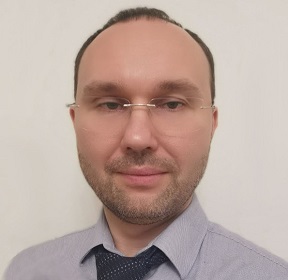
Denis G. Alekseev
Samara State Medical University RussiaTitle: A rational approach to deriving biological products for tissue engineering from children’s deciduous teeth
Abstract:
Against the background of the active development of such a modern trend of regenerative medicine as tissue engineering, the gradual entry of the latter into clinical practice, the issues of deriving, banking, and storing cell cultures and biomaterials used for the manufacture of structures - analogous to natural tissues will become increasingly relevant. At the same time, the problem of choosing affordable and effective sources of cells and biomaterials that match ethical requirements, coupled with the most rational use of them, is expected to require the closest attention.
One of the clinical medicine areas that actively implements and applies the achievements of tissue engineering is maxillofacial surgery and reconstructive interventions on the bones of the facial skeleton. Tissue engineering involves the use of cells, and biomaterials - as temporary analogs of the extracellular matrix (scaffolds) and factors that stimulate regeneration. Stem cells remain the most popular cellular material for tissue engineering. About the jaw apparatus, the most optimal source of stem cells may be the tooth itself, because this source is available, and tooth stem cells, unlike other stem cells, may have the ability to induce tissue growth in the alveolar processes. Stem cells are isolated from tooth pulp (DPSC), periodontal ligament (PDLSC), the dental follicle (DFPC), papilla (SCAP), and deciduous teeth (SHED).
In addition to cells, the second component of tissue engineering is needed - a biomaterial that mimics the extracellular matrix (scaffold). Synthetic and xenogenic analogues of bone tissue remain the most accessible source of biomaterial substitutes. Synthetic materials such as polycaprolactone, bioactive glass and various composites make it possible to prepare scaffolds with the desired shape, but low biocompatibility, fragility and possible toxicity limit their use. Biological materials of xenogenic origin (collagen, chitosan, agarose, hyaluronic acid) are well-biocompatible and biodegradable, promoting tissue growth. However, structures based on them have low strength and can cause a rejection reaction.
Therefore, allogeneic biomaterial remains the gold standard for bone tissue reconstruction, since it contains not only factors that promote tissue growth but is also immunologically and physiologically maximally acceptable to humans. Jawbones, alveolar processes, and teeth develop from neural crest cells, so a huge number of structural proteins are similar both for the bone tissue of the jaw apparatus and for dentin and cement. Therefore, it is quite logical that dentin, which makes up more than 85% of the teeth’ structure, is used as a biomaterial for tissue engineering in maxillofacial surgery.
Thus, the tooth can be a universal source of components for tissue engineering in maxillofacial surgery. In terms of the rational use of this source, it is worth noting that until now, methods for deriving either cell cultures or biomaterials from teeth have been known. A method for extracting tooth pulp to obtain stem cell culture is known. However, due to the presence of aggressive technological stages of processing, this method has disadvantages in the form of the death of part of the cellular material, as well as the disposal of valuable biomaterial – dentin, which can be used for the needs of regenerative medicine. A method for obtaining fibroblast-like cells from the pulp of deciduous teeth is also known. The disadvantage of the method is the high frequency of contamination of the material and the risk of infection transmission due to insufficiently effective processing of the original biological material. There is also a decrease in the number of extracted cells and the quality of the biological product. And with this method, dentin is also disposed of. On the other hand, allogeneic dentin is used as a biomaterial for tissue engineering in maxillofacial surgery. However, the method of dentin harvesting used does not leave a chance for deriving cellular material (stem cells) from the tooth. We have developed a method for parallel production of a culture of mesenchymal stromal cells (MSCs) and demineralized dentin from baby deciduous teeth that have fallen out and removed according to orthodontic indications in children under 7 years of age.
The proposed method of parallel waste-free production of MSC and demineralized dentin from baby deciduous teeth significantly optimizes the production cycle, and reduces the consumption of raw materials, time, and labor costs of personnel, allowing to obtain a full range of products for regenerative medicine with optimal osteoinductive and osteoconductive properties for successful regeneration of bone tissue. And the use of deciduous teeth removed according to orthodontic indications, in addition to naturally falling out, significantly expands the possibilities for obtaining biomaterial.
E-Poster
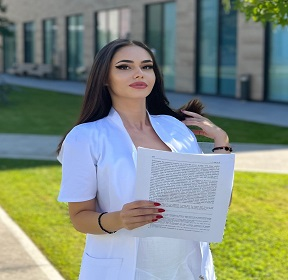
Alice Colescu
Humanitas University RomaniaTitle: Role of the opioids in stem cells biology
Abstract:
Opioids have been used for sedation and pain management for many millennia and are regarded as the earliest medications known to humans. Enkephalins, dynorphins, endorphins, and nociceptin/orphanin FQ are the four groups into which endogenous opioid peptides are currently subdivided. The opioid receptors (ORs), transmembrane proteins that are expressed throughout the body and are members of the superfamily of G-protein-coupled receptors, mediate their effects; these receptors include the opioid receptor (DOR), opioid receptor (MOR), opioid receptor (KOR), and nociceptin/orphanin FQ receptor (NOP). Endogenous opioids are mostly studied in the central nervous system (CNS), although their function in other organs has also been examined in both healthy and pathological contexts. Since these cells are a subject of intense scientific interest due to their unusual characteristics and their involvement in cell-based therapies in regenerative medicine, we here review their function in stem cell (SC) biology. The potential of endogenous opioids to control SC proliferation, stress response (to hunger, oxidative stress, or damage after ischemia-reperfusion), and differentiation towards various lineages, such as neurogenesis, vasculogenesis, and cardiogenesis, is the subject of our study.
Biography:
Alice Colescu is a 4th-year medical student in Iasi, Romania. She is part of the HPHR team and is also a fellow research assistant at Humanitas University, Milan. Her motto: Always have high hopes. Dreams can come true if you dare to pursue them.
Keynote Forum

David Greene
R3 Stem Cell, USA USATitle: The Therapeutic Potential of Human Umbilical Cord Derived Mesenchymal Stem Cells for the Treatment of Premature Ovarian Failure
Abstract:
Premature ovarian failure (POF) affects 1% of women under 40, leading to infertility. The clinical symptoms of the POF include hypoestrogenism, lack of mature follicles, hypergonadotropinism, and amenorrhea. POF can be caused due to genetic defects, autoimmune illnesses, and environmental factors. The conventional treatment of POF remains a limited success rate. Therefore, an innovative treatment strategy like the regeneration of premature ovaries by using human umbilical cord mesenchymal stem cells (hUC-MSCs) can be a choice. To summarize all the theoretical frameworks for additional research and clinical trials, this review article highlights all the results, pros, and cons of the hUC-MSCs used to treat POF. So far, the data shows promising results regarding the treatment of POF using hUC-MSCs. Several properties like relatively low immunogenicity, multipotency, multiple origins, affordability, convenience in production, high efficacy, and donor/recipient friendliness make hUC-MSCs a good choice for treating basic POF. It has been reported that hUC-MSCs impact and enhance all stages of injured tissue regeneration by concurrently stimulating numerous pathways in a paracrine manner, which are involved in the control of ovarian fibrosis, angiogenesis, immune system modulation, and apoptosis. Furthermore, some studies demonstrated that stem cell treatment could lead to hormone-level restoration, follicular activation, and functional restoration of the ovaries. Therefore, all the results in hand regarding the use of hUC-MSCs for the treatment of POF encourage researchers for further clinical trials, which will overcome the ongoing challenges and make this treatment strategy applicable to the clinic shortly.
Biography:
Greene is a residency and fellowship-trained orthopedic surgeon who has shifted completely into business. He started a healthcare internet marketing company, US Lead Network, that helps medical and dental practices acquire patients on the web in a pay-for-performance manner. The company is now using Artificial Intelligence for marketing which is lowering the cost per lead substantially. He has written two books on Healthcare Internet Marketing that are available for purchase on Amazon. He has been featured as a Top 20 Expert Author by Ezines.com, the top article directory site in the world. Out of over 470,000 authors, Greene ranks #15 as an Expert Author and #1 in the Pain Management category. He also started a regenerative medicine company, R3 Stem Cell, that offers marketing, an IRB-approved protocol, and top products for practices nationwide. R3 offers stem cell training courses that are second to none at https://stemcelltrainingcourse.org
Speakers
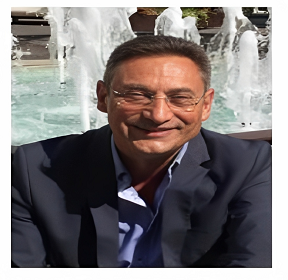
Maurizio Serafini
Villa Castiglione, Italy ItalyTitle: Use the P.R.P. in severe bone defects
Abstract:
Tissue regeneration is a crucial therapeutic aspect to achieve complete and harmonious esthetical and functional oral rehabilitation. The need to overcome problems such as long recovery time, high costs for both clinician and patient, and cross-infection risk, led to the development of new techniques based on growth factors' huge potential via PRP and PRF, obtained in the office before the surgical procedure. The study aims to demonstrate the influence of using growth factors in bone regeneration in advanced implantology cases, such as severe bone defects that involve the maxillary sinus. The preliminary study of complex cases through CT scans and computerized implant software, it’s crucial for an accurate preoperative evaluation of the anatomic limitations and facilitates preoperative planning of therapeutic strategy.
Biography:
Maurizio Serafini completed Degree in Medicine and Surgery in University of Chieti Gabriele D’Annunzio in 1985. He is a Dental Practitioner, Chieti. Mostly involved in implant-prosthetic rehabilitation in patients with bone atrophy, with personal case studies in the technique of intraoral bone graft and use of mitogenic agents &/O growth factors: PRP, aimed at an excellent aesthetic result. Professor, 2014 and 2011 at Master in Oral Implantology and Prosthodontics, University of Bari. 2005-2008 Tutor and Research Scientist for Alpha-Bio. 1997-2003 Participated with the team of Prof. P. Morselli in sagittal osteotomy combined surgery to resolve Ortognatodontic severe problems, at "Villa Castiglione" private clinic in Bologna. Maurizio Serafini published 12 posters and 10 publications in International Journal, I currently participated at many International Congress of Medicine and Dentistry about Growth Factor. Elected to the World’s Top 100 Doctors, Class 2022.
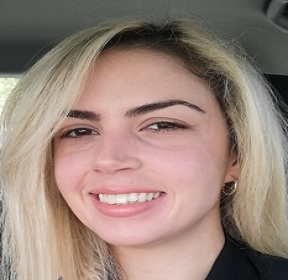
Niti Argyri
Biohellenika Sa GreeceTitle: Preparation if innovative and advanced antimicrobial skin regeneration patches supplemented with extracellular matrix components and stem cells
Abstract:
Statement of the Problem: Wound healing takes place in successive but overlapping stages involving cells, bioactive agents, and the extracellular matrix. In the last decades, our better understanding of the mechanisms involved allowed the generation of several so-called "bioactive" patches for the treatment of chronic and difficult wounds. The present study aims to synthesize and characterize a long-acting bioactive patch consisting of copolymers with inherent antimicrobial properties, reinforced with Arg-Gly-Asp (Arginylglycylaspartic acid - RGD) peptides and adipose mesenchymal stem cells (AMSCs).
Methodology & Theoretical Orientation: For this purpose, 2 types of co-polymers were synthesized and tested. 1) Copolymers of a biocompatible aliphatic polyester (TEHA-co-PDLLA), patterned with micro pyramids using thermal Nanoimprint Lithography (T-NIL), which enhance the antimicrobial activity of L-poly(lactic acid) (PLLA), an aliphatic polyester with biodegradability, biocompatibility and exceptional mechanical and thermal properties and 2) copolymers of chitosan (CS) enriched with increased amounts of SBMA (CS-SBMA) with the inherent antimicrobial property of the base material, i.e. CS. CS is a linear semi-natural polysaccharide derived from chitin, which is a biocompatible, biodegradable, and non-toxic polymer with enhanced antimicrobial and antioxidant activity. Moreover, the tripeptide RGD is found in all major ECM proteins and has been shown to enhance the adhesion and spreading of fibroblasts, endothelial cells, and smooth muscle cells on different surfaces. Finally, ASCs have an important role in the healing process of the skin through their metabolic activity and release of bioactive molecules, such as growth factors. AMSCs were isolated by a human donor through enzymatic digestion. Then, the copolymers were primarily validated for their biocompatibility properties via MTT assay using AMSCs. Both copolymers were supplemented by coating the RGD peptide on their surface and further enhanced by seeding AMSCs. To optimize the conditions for the best bioactivity of the final product, we initially assayed the response of AMSCs to different concentrations of the RGD biopeptide (10, 20, 50 μg / ml) considering: 1. proliferation/viability/cytotoxicity by MTT and 2. cell adhesion with crystal violet cell adhesion assay. To further evaluate the potential biological activity of the final patches, the expression of genes that induce angiogenesis in AMSCs was assessed using RT-PCR. Finally, the candidate copolymers were assessed for their antimicrobial potency against Escherichia coli (gram-negative) and Staphylococcus aureus (gram-positive).
Findings: The above experimental procedures showed induction of cell adhesion in the presence of RGD in a dose-response manner suggesting a biological relevance. However, cell proliferation in ASCs was inversely proportional to the RGD concentration. Therefore, the minimum RGD concentration was chosen for the maximum biological activity of the final patch. This is due to the potential cytotoxicity of the peptide or the degree of cell attachment to the material. The strong attachment of cells to the substrate is incompatible with the process of cell proliferation in which cells "loosen" their attachment to divide. Lower concentrations of RGD were also examined but there was not a significant improvement. As for the expression of vasoactive agents in AMSCs, we have a clear induction only in the patch of CS-SBMA. In vitro TEHA-co-PDLLA patch evaluation showed that the presence of RGD did not improve significantly cell adhesion, proliferation, or VEGF / Angiopoietin-1 expression in the final product. This may concern the topography and the properties of the material. Perhaps coating the material on its entire surface with the RGD peptide may have had negative consequences on the overall properties of the material, and perhaps its controlled placement during material preparation should be attempted. As for the antimicrobial properties, both patches showed satisfactory results, the CS-SBMA due to the chitosan’s properties, and the TEHA-coPDLLA due to the nanostructures that prevent the growth of pathogenic microorganisms due to their geometry and arrangement in space.
Conclusion & Significance: In conclusion, both TEHA-co-PDLLA and CSSBMA in vitro patches exhibit some bioactive properties that could be important for inducing wound healing. At present, our data suggest that the patch based on CS-SBMA and enhanced with RGD and AMSCs exhibits superior angiogenic and proliferating properties which might be beneficial for the improvement of wound healing. Further improvement of TEHA-co-PDLA could be achieved by using different approaches to the delivery of the RGD onto the patch's surface.
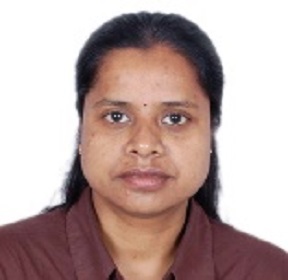
Mamatha Mishra
Jai Research Foundation IndiaTitle: Isolation of adult skin stem cell and clinical acquirement of the human skin substitutes for challenges
Abstract:
Skin is the primary interface between us and our environment and it serves several distinct functions such as protection, sensation, thermoregulation, communication, and self-repairing after injury. The microscopic anatomy of skin reflects this functional complexity. The epidermis has become a model system to study regeneration as it is comprised of at least three major stem cell populations: the basal layer of interfollicular epithelium, the hair follicle bulge, and the sebaceous gland. These subpopulations are responsible for regulating epithelial stratification, hair folliculogenesis, and wound repair throughout life. The potential adult skin stem cells have tremendous power to differentiate and plays important role in the healing wound. Functional stem cell units have been described throughout all layers of human skin. Using differentiated skin cells, different scaffolds were prepared in artificial laboratory conditions. Using co-cultured skin cells on an acellular dermal matrix, it would be possible to create a functional skin tissue construct that can implant in the human body. It would eliminate the need for donor skin. To evaluate promising therapy for burn patients and a large number of non-healing cutaneous wounds, isolation of skin stem cells and differentiating them to generate human skin constructs would provide a valuable platform for 3D skin constructs.
Biography:
Mamata Mishra has completed her Ph.D. at National Brain Research Centre, in INDIA. She has 5 years of post-Doctoral research at Temple University, Philadelphia, PA, USA, and IISC., JNCASR, Bangalore, INDIA. She worked as the head of the Stem Cell Laboratory, in Navi Mumbai, India for 4 years and is currently as Senior Research Scientist, at JAI RESEARCH FOUNDATION, Gujarat, India. She has 26 international publications that have been cited over 692 times, and her publication h-index is 19. She has an international award from the International Society of Neurovirology (ISNV) in San Diego, USA as Young-investigator and she has the ‘Best Paper published” award from the Indian Academy of Neuroscience, India. She has been serving as an editorial board member of several peer-reviewed reputed journals.
Poster
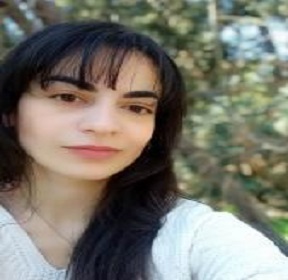
Antrea-Antriana Psaraki
National and Kapodistrian University of Athens GreeceTitle: Development of a tailored cell-free therapeutic approach based on MSC-exosomes for acute hepatic failure
Abstract:
Statement of the Problem: Acute hepatic failure (AHF) is a rapid deterioration of liver function with a high mortality rate. To date, liver transplantation is the gold standard therapy for AHF with limitations related to donor organ shortage and life-long immunosuppressive therapy. Our previous studies have shown that factors released by fetal mesenchymal stromal cells (MSCs) and their hepatocyte progenitor-like (HPL) cells, could induce liver repair and down-regulate the systemic inflammation in CCL4-mice, by secretion of IL-10 and Annexin A1. We proved an alternative bio-therapeutic, exosomes (EXO), for improving AHF phenotype in vivo. We presented a novel concept in AHF therapy based on the secreted EXO by umbilical cord MSCs (UC-MSCs) and their HPL cells in an AHF mouse model. Methodology & Theoretical Orientation: The data presented here, demonstrated the therapeutic effects of isolated EXO in ex vivo and in vivo experimental models, mimicking AHF disease. More specifically, EXO derived from UC-MSCs or HPL-cells improved liver phenotype in CCL4-induced mice and promoted oval cell proliferation. We further profiled the EXO protein cargo, instrumental for precise strategies for AHF. LC-MS/MS proteomic analyses showed that MEFG-8 protein was enriched in EXO and facilitated AHF rescue by suppressing PI3K signaling. In addition, the administration of recombinant MFGE-8 protein managed to reduce liver damage in CCL4 -mice. Clinically, MEFG-8 expression was decreased in biopsies of liver tissue from patients with AHF. We further applied a tailored therapeutic approach for AHF involving the application of modified UC-MSC-EXO cargo. Conclusion & Significance: More specifically, we investigated the function of MFGE-8 in liver damage in CCL4-induced mice by modifying its levels in UC-MSCEXO cargo. Further, we performed LC-MS/MS analysis in the MFGE-8-treated mouse livers and identified several proteins, mediating efferocytosis (such as Pklr, Gstt1, Gstt3, Fggy, Mthfd1, Dcxr, Slco1b2, and Abcc6), as well as others related to autophagy (such as ATG5, ATG7, LC3B, and Beclin-1). Collectively, we provide proof-of-concept for a tailored, multidisciplinary and cell-free, alternative strategy for AHF (Figure 1) and important new mechanistic information on the reparative function of progenitor cells in the liver.
Biography:
Antrea-Antriana Psaraki has extensive expertise in the field of stem cells and extracellular vesicles and their applications in regenerative medicine, aiming for more precise and effective treatments for liver diseases. She conducted an experimental approach, revealing the proteomic cargo and the therapeutic mechanism of exosomes derived from fetal MSCs in a mouse model of AHF. This specific model has been designed after years of experience in research and training in cell culture procedures, especially in the application of MSC-mediators (exosomes and CM) in liver diseases (Psaraki et al., 2022; Nikokiraki et al., 2022). The methodology that was followed was based on established procedures (Zagoura et al. 2012), as well as on findings, on the anti-inflammatory and regenerative role of MSC-secretome in AHF (Zagoura et al. 2019) and inflammatory bowel disease (IBD)

